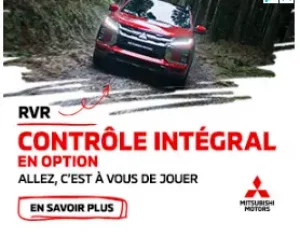Every one love to have a tidy, shiny good-looking car, but keep in mind that not every shiny thing is gold.
Pick a sunny day, since bad weather or darkness can mask many flaws, and have a careful look at the condition of the car’s body.
Stand in front centre of car and check and compare both sides such as lights, fenders etc. Nature has given you a hint, open your both hands and look at your fingers so they all are very symmetrical, now bend one finger. You can spot right away if something is not right between both hands. A car’s body is very symmetrical as our body any missing or uneven part can be spotted quickly. Apply the same approach when checking the body from front and rear end. You can re-position car toward sun to check colour for defect. Is the entire car the exact same colour? Pass your fingers on seam and joints, pay close attention to hood, trunk, doors and fenders for any sign of; new or used body part, rippled body work, dents, chipped or fresh paint, over sprayed, miss-matched colour, poor fit, misalignment, fresh weld, missing seals, uneven or too much gap; missing, loose, used or new hardware. All these signs indicate that this car had been in accident (minor or major), so find out details from seller in writing.
Open hood, trunk and all doors, check and compare as mentioned above. To check underneath you can slide an old mirror or slide your camera under car with spotlight to check any damage, body rust, rusty fuel and brake lines or any oil leak from engine or transmission.
Check for rust that can hide beneath blistered or peeling paint. If it eats through the car or trunk floor, wheel well and fenders, it can let deadly exhaust fumes inside. If left unchecked, it can compromise the structural integrity and safety of the body and suspension.
Lift the front floor carpets and trunk carpet to check the condition of the sheet metal underneath. Inspect other vulnerable areas like wheel wells and rocker panels. A small magnet against those areas will reveal plastic putty patches over rust or accident damage. Have a close look at the inside bottom edges of doors, the trunk and tailgates on vans or SUVs. These areas have more rusty concerns. There is no way to cure rust permanently short of replacing the panel, so any rust at all will be a problem. Open hood, trunk doors, if it feels very heavy, it may have been replaced with aftermarket parts check all the stickers such as VIN on driver door and emission sticker under hood. For outer colour finish you may used ultra yellow colour spotlight to find mismatched colour areas. Or paint thickness digital meter to find out extra layers of painted surface.

Problem Signs In The Interior
Check the interior for any damage, dash, trim and seats. Pay close attention to doors and window for operation. Musty odours suggest a water leak, which may be hard to find and fix. Turn on radio at high volume and listen from outside with all windows closed. If you can hear very loud and clear, chances could be loose seal or door misaligned due to accident. Or insert a paper between door sill and rubber seal and try to pull paper. If it moves out freely that could cause wind noise or water leak later. Check windshield for stone chip dings or crack. If you find fresh sealer around windshield, find out why. It could be a part of front end collision repairs.
Vital Signs Of Heavy/Misuse And High Mileage Cars
Under normal use, a used car should have between 15,000 KM to 25,000 km per year. But keep in mind that some time high mileage cars are better than low mileage, if maintained and driven with care. However, a very low mileage could be worse due to poor maintenance or the engine never gets enough time to warm up. Due to excessive condensation engine performance or emission could be jeopardized. So make your fair judgment based on facts.
A smart used car manager or auto/body tech can tell age and mileage of a car by observing certain critical worn-out parts/areas.
Check odometer if not in line; it may have been tempered to bring down mileage. Check with ministry, car fax or car proof or dealer database for past mileage record. If it is lower than past record, mileage has been altered or odometer tempered. Avoid such cars…period.
A saggy and loose driver‘s seat means heavy use. All saggy seats mean family use.
Badly worn or torn rubber pads on brake, clutch and gas pedal and deep down marks on driver side carpet are sure sign of high mileage.
Very shinny steering wheel around hand position and shinny arm rest are sure signs of long heavy use.
Shinny gear shifter means excessive use during short distance in city.
Loose ignition, key cylinder and driver door lock key like a knife means high mileage with heavy use for pick and drop.
Loose trunk hinges means a retired taxi.
Excessive stone chip on hood and windshield shows long distance driving on rural roads conditions.
Soft and loose seat track means more than one driver drove the car.
Loose doors and seals mean that it has been a family car.
Discoloured carpeting and silt in the trunk may be signs of flood damage.
There are indicators to find the previous driver’s profile.
Mohammad (Dr. Shah) Shahzad is a global automotive consultant/advisor and journalist. His motto is AutoMotive Is My Motive.







